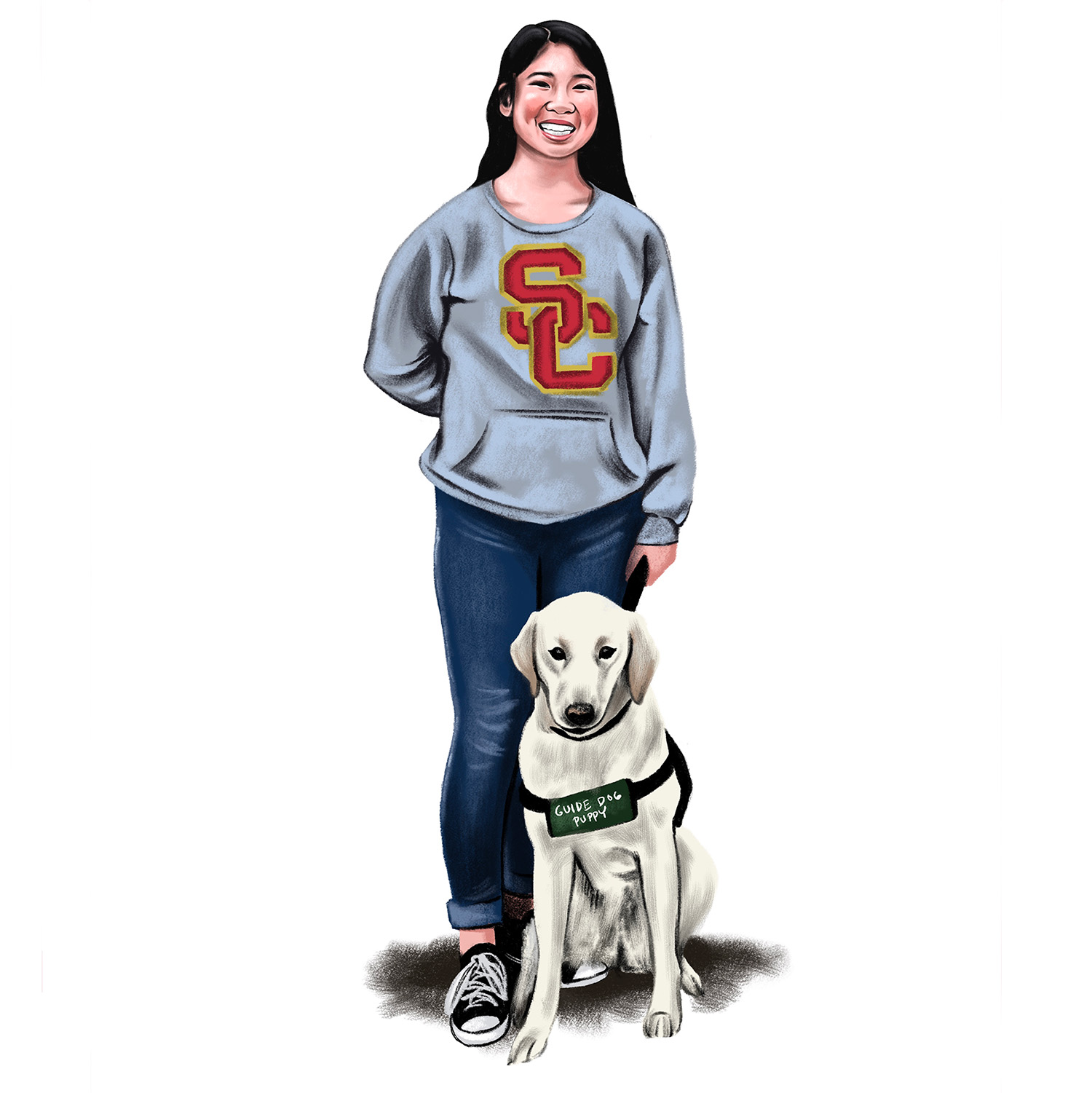08.06.2024
By John Hobbs
Guide Dog Whisperer

When Sarah Low DPT ’26 is not working toward a doctor of physical therapy degree at USC, she spends her time training guide dogs for a life of service.
SOMEWHERE IN CANADA right now, there’s a visually impaired woman relying on a guide dog, named “Drew,” to get around and enjoy her activities of daily living. Though that woman may not know it, she has a USC DPT student to thank for that furry companion.
Sarah Low DPT ’26 began training guide dogs as a high school sophomore. Since then, she has prepared three (and counting!) of her canine trainees for lives of service.
As the dog days of summer descend upon us, we sat down with Low to better understand the life of a guide dog trainer. “If anyone is more interested about guide dog raising,” she says, “I highly recommend watching the documentary Pick of the Litter on Disney-plus as it follows puppies from birth through training and provides good insight into what it takes for these dogs to be successful and achieve their purpose.” Here’s a little more from our interview with Low:
How did you first get into training guide dogs?
I’ve always loved dogs and the companionship and comfort they provide. The concept of training dogs to enhance people’s quality of life and daily function inspired me to seek out and engage with the local Guide Dogs for the Blind organization.
What do you find most rewarding about being a guide dog trainer?
Seeing hours of training pay off with a puppy happily demonstrating skills and tasks critical to function as a successful guide is a huge joy, especially knowing the increased mobility and independence they provide to an individual who is visually impaired. Even more rewarding are the testimonies of guide dog recipients at graduation and afterwards, of how their lives have been dramatically changed by the service of a guide dog; these are the stories that keep me motivated on days when training is challenging.
Speaking of challenging days, what’s the most difficult aspect of training guide dogs?
The most difficult aspect of training guide dogs is their high emotional intelligence and responsiveness to body language, tone, habits, and movement consistency — or lack thereof. Intentionality and vigilance with repeated practice and a lot of patience is required to communicate clearly and not give mixed signals that might distract them from the behavioral outcome you want to achieve.
What’s something about the job or guide dogs in general that most people might find interesting?
When the dogs guide visually impaired individuals, the dogs are taught “intelligent disobedience,” meaning that in order to keep the person safe, the dogs may intentionally disobey the command given to them such as not crossing the street if a car is coming or the light does not indicate that it is safe to cross yet. It might also be interesting to know that guide dog puppies are trained to relieve on command; this allows for accommodation of both the needs of the handler and the dog.
How does training guide dogs supplement your DPT education at USC?
The experience of training guide dogs laid a solid foundation and prepared me for what’s required as a DPT student and future clinician, as every individual is unique with specific needs and multiple factors contributing to their presentation. Being able to respond in real time and modify my own behavior and treatment options as needed, increases the efficacy of interventions to accomplish goals that are meaningful to patients.

